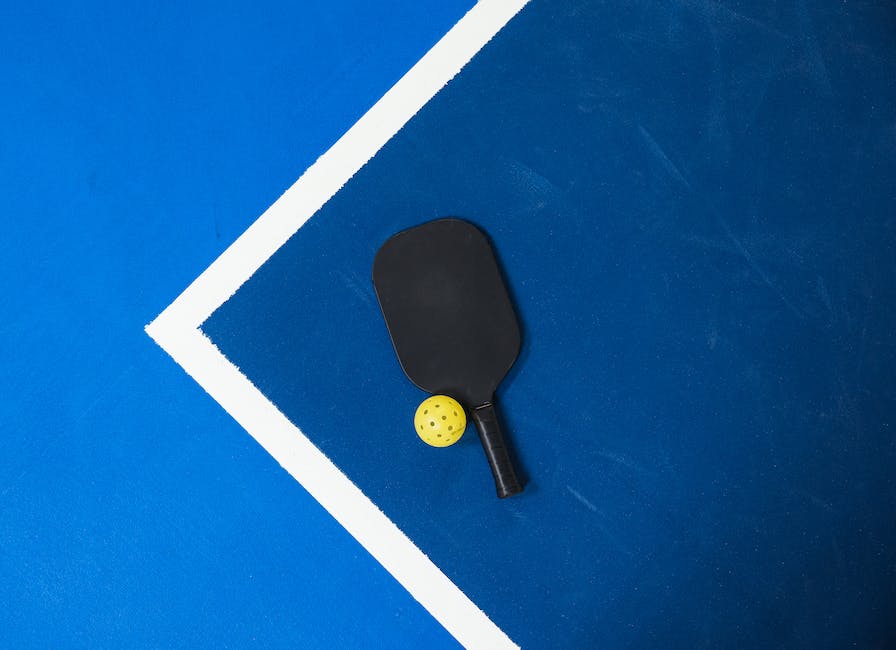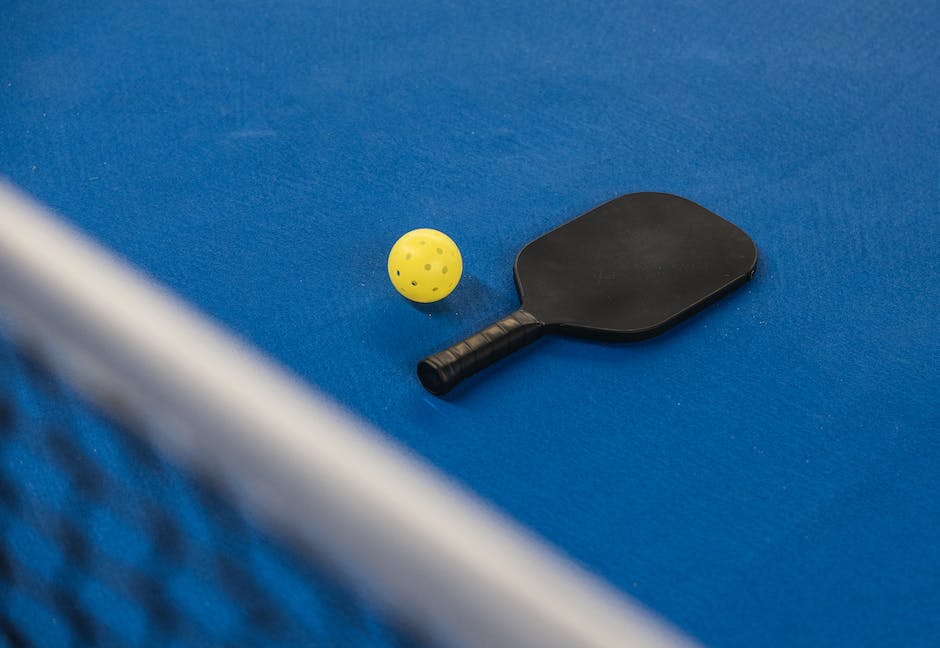Pickleball: a sport uniquely named, gaining high popularity and sees an extraordinary balance between fun, fitness, and technical sophistication. As fast-paced as it is strategic, the game’s success, to a great extent, relies on the quality and condition of the essential gear – the pickleball paddle. The paddle’s composition, its weight, size, and the materials employed in its creation drastically influence gameplay, transforming it from a leisure activity into a competitive sport. Like in modern sports gear, pickleball paddles can experience a common issue known as ‘delamination,’ a condition that has key implications on the paddle’s performance and longevity. This systematic review is focused on informing the general public on the phenomenon of delamination in pickleball, the impact it has, why it happens, and how best to prevent or address it when it does occur.
Basics of Pickleball and Pickleball Paddle
Pickleball: An Emerging Recreation
Pickleball is a rapidly growing sport in America, bridging the gap between intense racket sports like tennis and leisure games like table tennis. Its growth can be attributed to its accessibility—pickleball can be easily learned and played by individuals of varying ages and physical abilities. Moreover, pickleball merges elements of tennis, badminton, and ping-pong, requiring minimal equipment, namely a pickleball paddle, a plastic ball with holes, and a modified tennis net, making it more affordable and feasible for leisure and recreational play.
Composition of a Pickleball Paddle
In the game, one of the most crucial pieces of equipment is the pickleball paddle. Typically, these paddles are made from various materials, including wood, composite or graphite. They usually measure 15 to 19 inches in length and can weigh between 6 to 14 ounces. The weight and size of the paddle significantly impact a player’s performance, with heavier paddles providing more power and the lighter ones giving players better control and quick response. An ideal selection of pickleball paddle depends upon the player’s style and comfort with the gear’s size and weight.
Delamination of a Pickleball Paddle
Over time and with continuous use, a pickleball paddle may encounter a condition known as delamination. Delamination refers to the separation of the paddle’s material layers, usually caused by wear and tear, or sometimes due to manufacturing defects. When a paddle delaminates, it loses its stiffness and thus the power and effectiveness of its strikes. A paddle despite having a sleek appearance, isn’t immune to destructive forces, and continuous striking of the hard pickleball could eventually lead to delamination.
Detecting Delamination and its Effect on Gameplay
To check for delamination, lightly tap along the surface of the paddle with your finger. If it produces inconsistent sound, delamination might be a potential cause. A delaminated pickleball paddle can impact gameplay severely, diminishing control and power, altering the spin of the ball, and can even influence the trajectory and speed of the ball significantly.
Understanding and Addressing Delamination in Pickleball Paddles
When pickleball paddles suffer from delamination, it’s often better to contact the manufacturer about possible warranty claims, if applicable. If this isn’t an option, replacing the paddle could be the next best move. While there may be an instinct to repair a paddle that’s begun to delaminate, the unfortunate truth is that repairs might lead to reduced performance levels and typically do not restore the original quality of play. It’s worth noting that taking care of your paddle properly – avoiding use in extreme temperatures and preventing unnecessary harsh contact – can significantly extend its lifespan and help avoid delamination.

What is Delamination in Pickleball Paddles
What Exactly Does Delamination Mean When it Comes to Pickleball Paddles?
“Delamination”, as it relates to pickleball paddles, is the term used when the various layers within the paddle start to separate from each other. This can involve the outer layer detaching due to factors such as wear and tear or inadequate adhesion between the layers.
Typically, pickleball paddles consist of several layers of different materials like wood, composites, and polymers, which are bonded together with a form of adhesive. Each layer contributes certain properties to the paddle’s performance – power, control, spin, etc. When these layers begin to separate or “delaminate”, the optimal balance and performance of these properties get disrupted.
Cause and Impact of Delamination in Pickleball Paddles:
Delamination can occur due to a variety of reasons such as repeated hard-hitting, exposure to harsh weather conditions, poor manufacturing, or simply the passage of time. Constant pressure and impact can lead to the layers ‘breaking apart’ or the adhesive failing, leading to the layers moving independently of each other.
Once a pickleball paddle starts to delaminate, it can drastically impact the performance of the paddle. This is because the paddle begins to lose its power, control, and consistency in hitting the ball. Some players also notice an unnatural sound when the ball hits the paddle, or a feeling of ‘dead spots’ where the paddle does not rebound the ball as expected. Paddles that are delaminated can also become structurally weak, making them prone to breakage.
Identifying a Delaminated Pickleball Paddle:
Identification of a delaminated paddle can often be reliant on player feedback such as a change in the sound when the ball strikes the paddle, or inconsistency in shots. Physical signs can include blistering, cracking or bubbling on the paddle’s surface, but sometimes there may not be clear visual cues. In some cases, the paddle may feel lighter or unbalanced which can indicate that delamination has taken place.
Catching delamination early can extend the life of your pickleball paddle. If you spot signs of delamination, it is often advisable to consider replacement or repair, especially if you’re in competition play, as the performance drawbacks can have a noticeable impact on the game. Most players prefer to replace a delaminated paddle to ensure optimal performance on the court, although repairs can be made if the delamination is minor and the paddle is otherwise in a good condition.
Regularly maintaining the quality of a pickleball paddle is crucial for its performance and longevity. Proper checks for signs of wear can help ensure the paddle is up to the mark. One of the key issues that need attention is delamination, a deterioration process which significantly reduces the effectiveness of the paddle.

Preventing and Addressing Delamination
Unpacking the Delamination Process in Pickleball Paddles
To comprehend what delamination is about, let’s describe it as a situation in which the surface of the paddle begins to pull away from its core material. Factors like natural wear and tear, low paddle quality, as well as inadequate care and maintenance, can induce this problem. The implications of a delaminated paddle are substantial, leading to a loss of power and control in shots, therefore undermining its effectiveness in games. Additionally, a delaminated paddle falls outside of the officially recognized pickleball tournament rules, rendering it illegal due to its potential to confer an unfair advantage.
Preventing Delamination
Preventing delamination begins with the purchasing decision. Investing in a quality pickleball paddle can reduce the chances of early delamination. Pickleball paddles made of sturdy materials such as graphite or composite are typically more resistant to delamination.
On the maintenance side, the primary action one can take is to store the paddle in a protective case when it’s not being used. This shields it from adverse weather conditions that could cause delamination. Sun exposure, for example, can cause the glue holding the layers together to breakdown. Regularly cleaning the paddle with a soft cloth can also help in eliminating dust and grime that could lead to delamination.
Addressing Delamination
If your pickleball paddle becomes delaminated, you have a few options. One consideration is repairing it. Depending on the degree of delamination, a simple adhesive might be enough to secure the layers together again. However, ensuring an even application is crucial to avoid altering the paddle’s balance or weight. If the extent of delamination is significant, a repair may not restore it to its original performance level.
In many cases, players find it more beneficial to replace the delaminated pickleball paddle entirely. A new paddle not only brings assurance of legal play but also revives the player’s competitive edge with improved control and power in shots. The right paddle can make a significant difference in the game, and eliminating performance concerns due to delamination should be a priority for every player.
When to Replace
Understanding when to replace your delaminated pickleball paddle significantly depends on the extent of the delamination and how it affects the performance of play. If the paddle’s surface is peeling or if there are noticeable defects that impact the game, replacement is likely the best choice. Ultimately, it’s always a good idea to have a backup paddle. The lifespan of a pickleball paddle varies depending on its quality, usage, and how well it’s maintained, but having a replacement ready can ensure an uninterrupted play.

Preserving your pickleball paddle and ensuring its longevity with simple steps of maintenance is not a mere recommendation but a prerequisite for consistent performance. An understanding of delamination, whether it’s caused by adverse weather, poor manufacturing, or aggressive play, allows pickleball enthusiasts to take preventative measures and make informed decisions when it happens. Prevention, as is always said, is better than cure. However, if delamination occurs, recognizing it and addressing it promptly can save both the paddle and the player’s game. It’s important to remember that pickleball is not just about the game but the equipment as well. With proper awareness and care towards their paddles, players can enjoy this sport at its peak potential longer, while challenging their limits and sweating it out on the courts.

I am Michael Wanner, an experienced and educated expert in the field of pickleball. I hold a degree in Sports Science from Cleveland State University, Ohio, USA. My expertise lies in the technical aspects of pickleball and how to play it effectively. I have spent many years playing and coaching pickleball and have a wealth of knowledge to share with my readers. I am a valuable resource for anyone looking to improve their pickleball skills and strategies.
